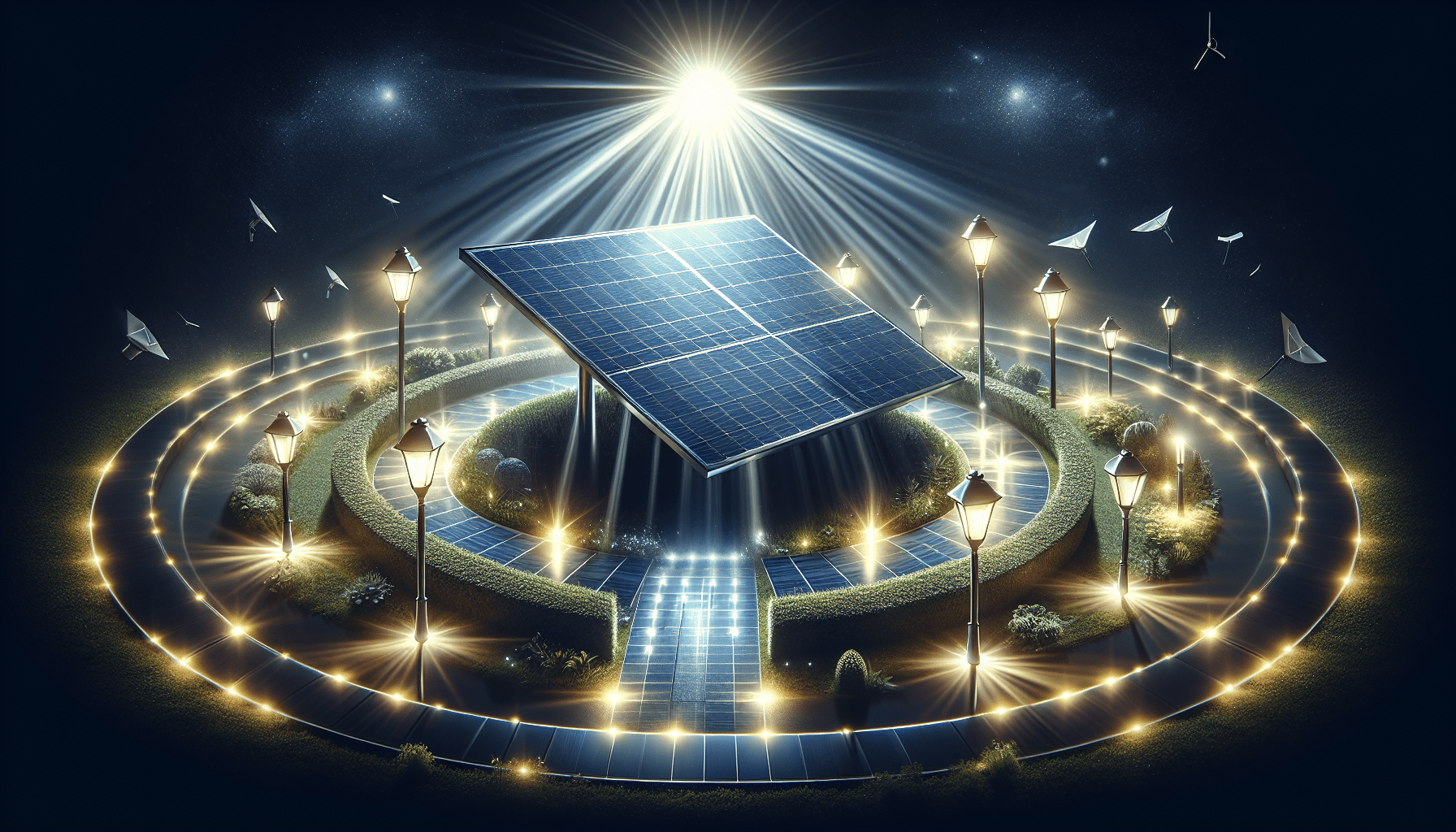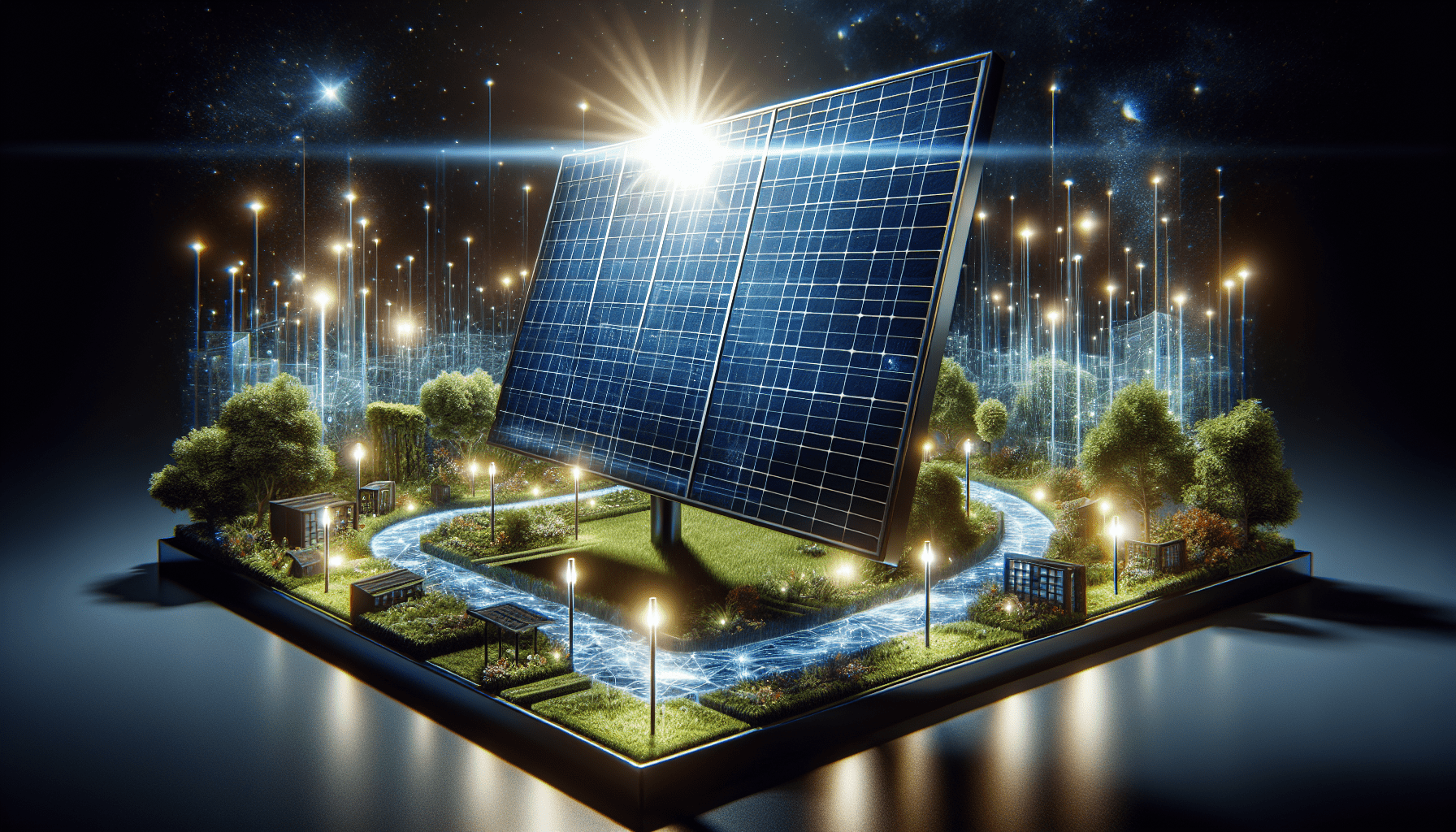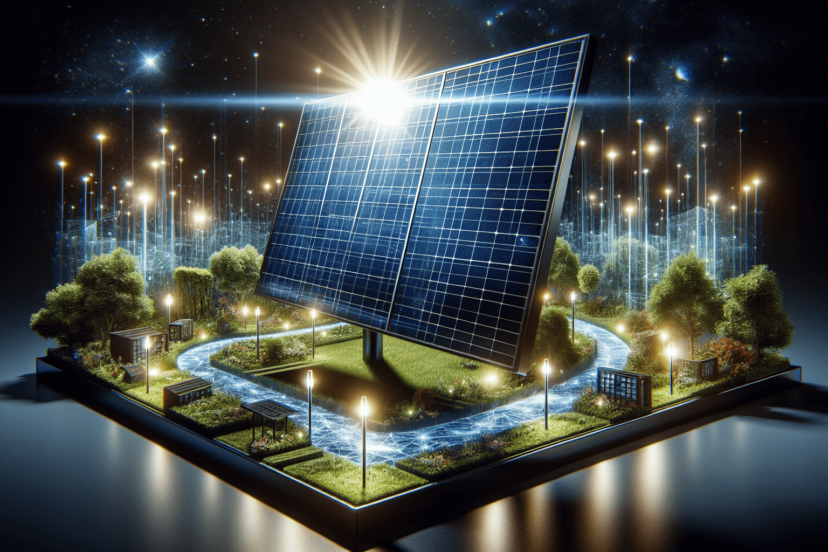Harnessing Solar Power for Innovative Outdoor Lighting Solutions
As an Amazon Associate, I earn from qualifying purchases, at no additional cost to you. Disclaimer
Have you ever wondered how you can illuminate your outdoor spaces while being environmentally conscious and saving on energy costs? Solar power presents an ideal solution by transforming the way you think about outdoor lighting, combining sustainability with innovation. In this guide, you’ll discover the ins and outs of using solar energy to power your garden, pathways, and even your patio with brilliance.
Click Here to Go Solar and Save
Understanding Solar Power
Solar power harnesses the sun’s energy and converts it into electricity. By using solar cells, this energy can be captured and used without generating harmful emissions, making it a viable green alternative to conventional energy sources.
How Solar Power Works
At the core of solar power are photovoltaic (PV) cells, typically made from silicon. These cells absorb sunlight, which then excites electrons, creating electricity. This electricity can be used immediately or stored in batteries for later use, particularly when the sun isn’t shining.
Why Solar Power is Beneficial for Outdoor Lighting
The most significant advantage of solar power for outdoor lighting is its eco-friendliness. Not only does it reduce your carbon footprint, but it also lowers your energy bills. Moreover, because solar-powered lights don’t require an electrical grid connection, they offer versatility in placement—perfect for gardens or driveways where wiring might be impractical.
Types of Solar Outdoor Lighting
When it comes to solar outdoor lighting, you’ll find a variety of options designed to meet different needs. Whether you’re lighting a pathway or spotlighting yard features, there’s likely a solar solution available.
Pathway Lights
Solar-powered pathway lights are ideal for illuminating walkways. They’re typically small, staked into the ground, and automatically turn on at dusk. These lights subtly enhance safety and ambiance without excessive glare.
Spotlight and Flood Lights
For highlighting specific areas or features such as trees or statues, solar spotlights and floodlights are an excellent choice. They use more powerful LEDs to cast a focused or broad beam of light and often come with adjustable heads for precise targeting.
String Lights
Solar string lights add warmth and charm to any outdoor event or cozy patio setup. Available in various lengths and styles, these lights charge during the day and can brightly glow well into the night, ideal for parties or casual evenings outdoors.
Lamp Posts and Lanterns
For a more traditional look, consider solar lamp posts or lanterns. They provide a classic ambiance while offering better illumination than smaller fixtures. Perfect for driveways or garden perimeters, they often come in stylish designs to complement various aesthetics.
Wall and Fence Lights
These lights are perfect for enhancing the security and decor of outdoor walls and fences. They cast light downwards and can create a soothing atmosphere while highlighting exterior architectural features.

Click Here to Power Your Home with Solar
Advantages and Disadvantages of Solar Outdoor Lighting
While solar lighting offers numerous benefits, there are a few disadvantages to consider to make the best choice for your landscape lighting needs.
Advantages
- Eco-Friendly: Uses clean energy, reducing carbon emissions.
- Cost-Efficient: No monthly power costs; long-term savings on electricity bills.
- Easy Installation: Requires no complex wiring, allowing for flexible placement.
- Low Maintenance: Minimal upkeep compared to electric lights.
- Automatic On/Off: Many solar lights feature sensors that turn them on at dusk.
Disadvantages
- Weather Dependent: Performance can be affected on cloudy or rainy days.
- Initial Cost: While falling, the price of buying solar lights can be higher.
- Battery Life: Solar lights rely on battery power, which diminishes over time.
| Advantages | Disadvantages |
|---|---|
| Eco-Friendly | Weather Dependent |
| Cost-Efficient | Initial Cost |
| Easy Installation | Battery Life |
| Low Maintenance | |
| Automatic Sensor |
Installation Tips for Solar Outdoor Lighting
Ensuring the optimal placement and installation of your solar lights can significantly enhance their efficiency and longevity.
Selecting the Right Location
Position your solar lights where they’ll receive maximum sunlight during the day. Avoid shaded areas caused by trees, buildings, or other obstructions, as insufficient solar exposure will reduce the lights’ capacity to function throughout the night.
Proper Positioning
For pathway lights, place them at regular intervals to provide even coverage. For spotlights, ensure they are directed correctly to highlight desired features. Adjustments might be needed after installation to achieve the desired effect.
Secure Installation
Make sure the lights are firmly planted and stable to avoid damage during storms or high winds. Use the installation stakes provided, and ensure the lights are firmly embedded in the ground.
Routine Check-Ups
Check periodically for dirt or debris on solar panels. Clean the panels with a damp cloth to maintain optimum charging capabilities. Also, inspect the lights for any signs of damage, and address issues promptly to prolong their lifespan.

Click Here to Discover Solar-Powered Solutions
Upgrading to Smart Solar Lighting
Advancements in technology now offer the possibility of integrating smart features into your solar lighting system, transforming not only energy efficiency but also the convenience and control.
Benefits of Smart Solar Lighting
- Remote Management: Control your solar lights via an app, making it simple to adjust brightness or set lighting schedules from your smartphone.
- Energy Optimization: Smart systems can adjust the intensity based on available sunlight, ensuring optimal usage and longevity.
- Cost Savings: With optimized energy use, you can extend the life of your solar batteries, reducing costs over time.
Integrating Smart Features
Look for solar lighting products that offer smart integration. Many systems are compatible with home automation platforms, allowing them to sync with other smart devices for unified control of your home’s lighting ecosystem.
Conclusion
Harnessing solar power for your outdoor lighting is more than a modern trend—it’s a step toward sustainability and innovation you can proudly undertake. While enjoying reduced energy costs and stylishly illuminated spaces, you contribute to environmental conservation efforts. From planning and installation to maintenance, understanding your solar lighting options enables you to beautify your outdoor spaces responsibly and efficiently. So, why not embrace this eco-friendly revolution and transform your outdoor lighting with the power of the sun?

